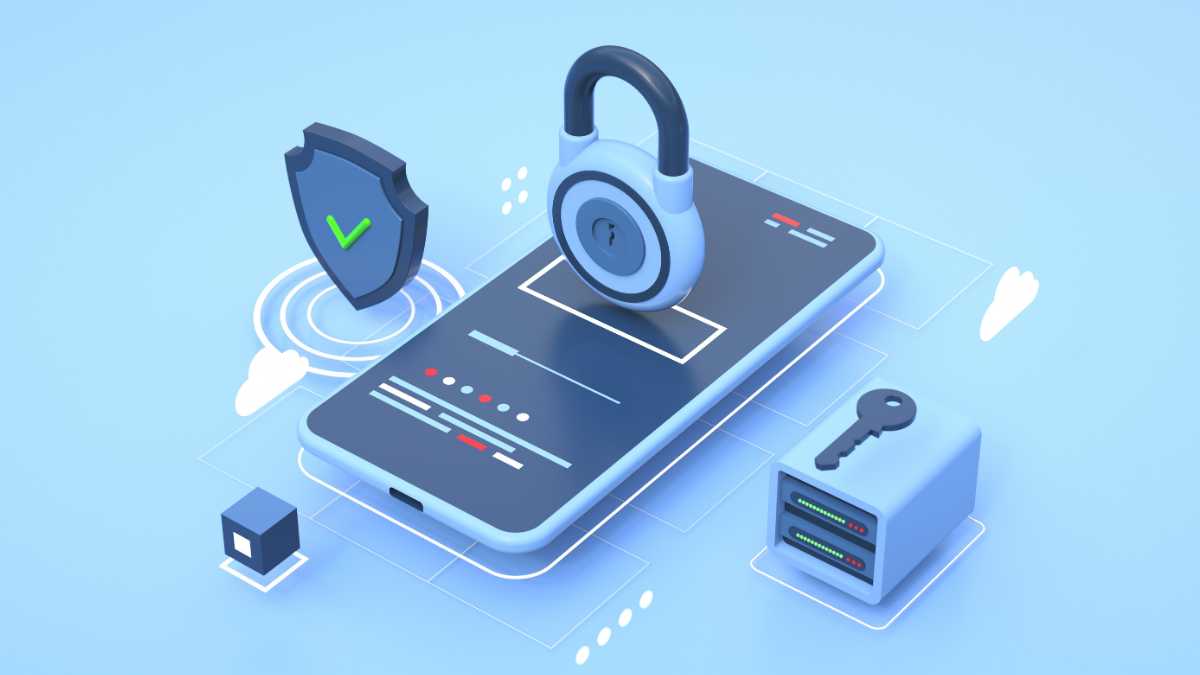In an increasingly digital world, mobile applications have become an integral part of our daily lives. From personal communication to financial transactions, we entrust these apps with sensitive information. Consequently, the security of mobile applications is of paramount importance. This comprehensive guide explores the critical aspects of app security, emphasizing data protection and user privacy, and provides best practices to ensure your mobile application remains a secure fortress.
The Growing Importance of App Security
The Pervasiveness of Mobile Apps
Mobile apps have achieved unparalleled ubiquity. They offer an array of services, ranging from communication and finance to healthcare and entertainment. However, this widespread use makes them an attractive target for cybercriminals seeking to exploit vulnerabilities.
Data Breaches and Privacy Concerns
The ever-increasing number of high-profile data breaches and privacy scandals has elevated user awareness and concern regarding data security. Users expect their personal information to be handled with the utmost care and responsibility.
Legal and Regulatory Landscape
Governments worldwide are enacting stringent regulations to protect user data and privacy. GDPR (General Data Protection Regulation) in Europe and CCPA (California Consumer Privacy Act) in California are prime examples. Non-compliance with these regulations can result in significant fines and damage to a company’s reputation.
Critical Aspects of App Security
Data Encryption
In-Transit Data
Encrypting data during transmission between the app and servers is crucial. Implement secure communication protocols like HTTPS to prevent eavesdropping and man-in-the-middle attacks.
At-Rest Data
Sensitive data stored on the device should be encrypted. This safeguards data even if the device falls into the wrong hands, ensuring that unauthorized access is nearly impossible.
Authentication and Authorization
Strong User Authentication
Robust user authentication mechanisms, including multi-factor authentication (MFA), should be implemented to ensure that only authorized users can access the app’s features and data.
Role-Based Access Control
Implement role-based access control (RBAC) to restrict users’ permissions based on their roles. This ensures that users can only access the data and functionalities relevant to their roles.
Secure Backend
API Security
Protecting APIs (Application Programming Interfaces) is crucial. Implement security measures to prevent common vulnerabilities such as SQL injection, cross-site scripting (XSS), and request forgery.
Server Security
Servers should be kept up to date with security patches, utilize intrusion detection systems, and undergo regular security audits. Proper server security prevents unauthorized access and data breaches.
Data Validation and Sanitization
All user inputs must be rigorously validated and sanitized to prevent various types of attacks, including SQL injection and cross-site scripting (XSS).
Code Review and Testing
Static Analysis
Employ static code analysis tools to identify potential security vulnerabilities during the development phase. Address these issues before they make their way into production.
Dynamic Testing
Conduct dynamic testing, such as penetration testing, to assess your app’s security in real-world scenarios. This proactive approach helps identify vulnerabilities and weaknesses that might not be apparent through static analysis alone.
User Privacy and Data Protection
Transparent Data Handling
Privacy Policies
Create and communicate transparent privacy policies that clearly articulate how user data is collected, processed, and stored. Make these policies easily accessible within the app.
Consent Mechanisms
Obtain explicit user consent for data collection and sharing. Users should be fully informed and given the choice to opt in or opt out of data sharing.
Minimization of Data Collection
Collect only the data that is strictly necessary for the app’s functionality. Avoid unnecessary data collection, which not only poses privacy risks but also increases data storage costs.
Data Anonymization
Whenever feasible, anonymize user data to protect individual privacy. Anonymized data can still provide valuable insights without compromising user identities.
Secure Data Storage
Encryption
Sensitive data stored on servers or within the app should be encrypted using strong encryption algorithms. Encryption keys should also be managed securely.
Regular Auditing
Conduct regular security audits and vulnerability assessments of data storage systems. This proactive approach helps identify and remediate vulnerabilities before they can be exploited.
Best Practices for App Security
Ongoing Education and Training
Developer Training
Invest in the ongoing training and education of your development team. Keep them updated on the latest security threats, best practices, and emerging technologies. A well-informed team is your first line of defense.
Security Awareness for Users
Educate users about app security risks and best practices. Provide guidance on how they can protect themselves while using your app. Informed users are less likely to fall victim to phishing attempts or other cyberattacks.
Regular Security Audits
Conduct frequent security audits and code reviews to identify vulnerabilities and weaknesses in your application’s codebase. These audits should be an integral part of your development lifecycle.
Incident Response Plan
Develop a comprehensive incident response plan that outlines the steps to be taken in case of a security breach. This plan should include procedures for notifying affected users and regulatory authorities, as well as mitigating further damage.
Third-Party Libraries and SDKs
Be cautious when integrating third-party libraries and software development kits (SDKs) into your app. Ensure that these components are regularly updated to patch known vulnerabilities. Perform security assessments of third-party code to identify potential risks.
Compliance with Regulations
Stay informed about and comply with data protection regulations applicable to your app’s user base. Familiarize yourself with GDPR, CCPA, or any other relevant laws. Non-compliance can result in legal consequences and reputational damage.
The Human Element
Ethical Data Handling
Prioritize ethical data handling practices. Avoid invasive data collection or sharing practices that could violate user trust or regulatory requirements. Respect user privacy rights and preferences.
User Education
Empower users with knowledge about their privacy rights and how they can protect themselves while using your app. Provide clear instructions on how users can adjust privacy settings and control data sharing.
Case Studies in App Security

Uber Data Breach (2016)
In 2016, ride-sharing giant Uber fell victim to a severe data breach that exposed the personal information of 57 million riders and drivers. This case serves as a poignant example of the consequences of inadequate data protection practices and a lack of transparency in handling a security incident.
Incident Overview:
The breach occurred when hackers gained unauthorized access to Uber’s cloud servers, where they discovered sensitive data including names, email addresses, and phone numbers of riders and drivers. Even more concerning, the breach also exposed the driver’s license numbers of approximately 600,000 Uber drivers.
Lessons Learned:
- Timely Disclosure Matters: Uber’s initial response was to pay the hackers a substantial sum to delete the stolen data without notifying affected parties. This decision was widely criticized, and Uber faced severe backlash. The incident underscores the importance of prompt and transparent disclosure to affected users and authorities.
- Data Minimization: Uber later acknowledged that it had collected more user data than was necessary for its operations. The principle of data minimization—only collecting and storing data essential for service delivery—was not adequately followed, increasing the risk exposure in the event of a breach.
- Stronger Security Measures: This breach emphasized the need for stronger security measures, including robust encryption of user data both in transit and at rest, multi-factor authentication for user accounts, and regular security audits.
WhatsApp Encryption Controversy
WhatsApp, the popular messaging app owned by Facebook, has long been recognized for its end-to-end encryption, which ensures that only the sender and recipient can read the messages. However, this encryption technology has sparked an ongoing debate between user privacy advocates and law enforcement agencies.
Controversy Overview:
WhatsApp’s end-to-end encryption ensures that messages and calls remain private and secure. This level of encryption means that even WhatsApp itself cannot decrypt the content of messages, which is seen as a significant win for user privacy.
However, this very feature has led to controversy, as it also means that law enforcement agencies may face challenges in accessing messages during criminal investigations. This has triggered debates in various countries about whether WhatsApp should provide “backdoor” access to authorities to aid in investigations.
Lessons Learned:
- User Privacy vs. Law Enforcement Needs: The WhatsApp case highlights the ongoing tension between user privacy and law enforcement needs for access to digital communications. It serves as a reminder that privacy-focused apps should carefully navigate the balance between protecting user data and cooperating with legitimate law enforcement requests.
- Strong Encryption Matters: WhatsApp’s commitment to end-to-end encryption has been applauded by privacy advocates. It underscores the importance of implementing robust encryption measures to protect user data from unauthorized access.
- Transparency and Legal Compliance: Companies that offer encrypted services must be transparent about their practices and comply with the legal requirements of the regions in which they operate. Striking the right balance between user privacy and law enforcement needs requires careful consideration and adherence to relevant regulations.
These case studies serve as valuable lessons in the ever-evolving landscape of app security and data privacy. They underscore the need for proactive security measures, transparent communication, and a commitment to protecting user data in an increasingly connected world.
Conclusion
In an era where data is a precious currency and user trust is paramount, app security and data protection have become non-negotiable. App developers must prioritize security best practices, including robust data encryption, stringent authentication, and transparent data handling, to ensure the safety and privacy of their users.
Remember that security is an ongoing process, and staying vigilant against evolving threats is crucial. By implementing these best practices and maintaining a proactive security posture, you can build not only a successful app but also a trusted and secure relationship with your users.
App security is not just a feature; it’s a commitment to safeguarding your users and their data in an increasingly connected world.







